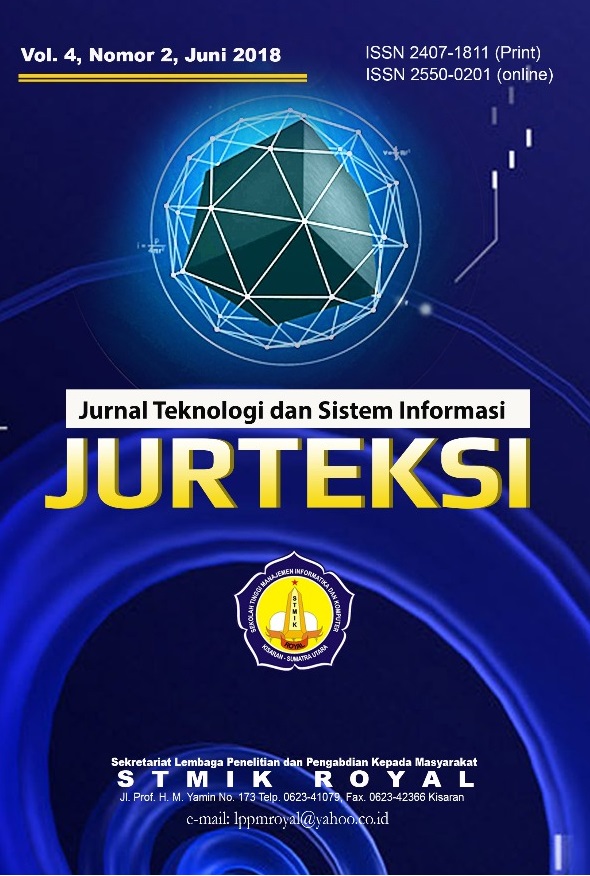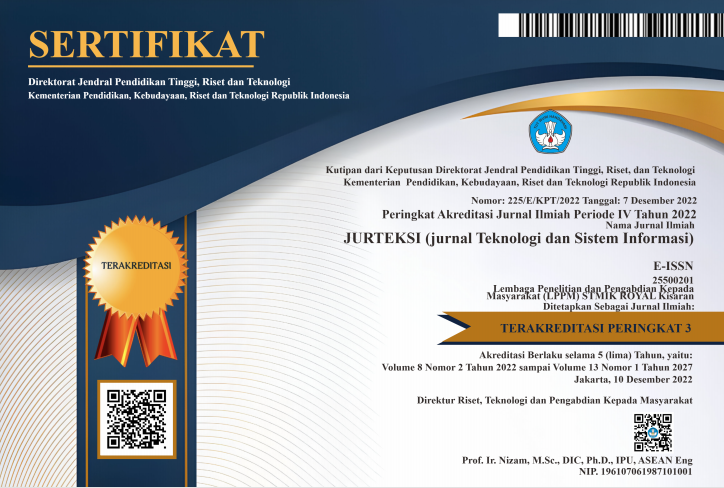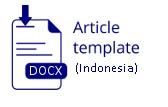E-GROCERY SYSTEM DESIGN FOR COURIER SERVICE DEVELOPMENT
Abstract
Abstract: Since the Covid-19 virus, there has been a decrease in the mobility of citizens in traditional markets, and many are affected by the termination of employment. In Batam, especially the Tiban area, most of the people are workers, with their busyness from morning to evening and often even late at night, giving people little time to shop for their daily needs in the market. E-groceries are starting to become more popular now, allowing people to shop online for their daily needs. E-grocery provides a variety of services, delivery services, and ease of use of applications to users. The design of the E-Grocery system significantly provides several operational advantages such as making data processing easier to trace and building personal relationships with customers and couriers so that they become closer. This is the company's competitiveness in selling their daily needs. This research aims to provide benefits to the community, sellers, and couriers to make it easier to shop for daily necessities such as fruits, vegetables, and other necessities, and also to help reduce the unemployment rate of the community by becoming a courier for delivery orders. The design of the E-Grocery system uses the agile method, with the software modeling language using UML. The result of this research is the E-grocery application, an android-based mobile application. With the e-grocery application, sales have been digitized to facilitate the distribution of daily goods to busy working people.
Keywords: delivery services; e-grocery; mobile application; system information; uml
Abstrak : Sejak Virus Covid-19 melanda telah terjadi penurunan mobilitas masyarakat di pasar tradisional Kota Batam, banyak yang terkena Pemutusan Hubungan Kerja (Phk). Kota Batam sendiri, khususnya daerah Tiban, mayoritas masyarakatnya adalah pekerja, dengan kesibukan dari pagi sampai sore bahkan tak jarang hingga malam hari, membuat masyarakat memiliki sedikit waktu untuk berbelanja kebutuhan sehari – hari ke pasar. Saat ini, E-grocery mulai banyak bermunculan memungkinkan orang-orang untuk berbelanja kebutuhan sehari-sehari secara online. E-grocery menyediakan berbagai macam pelayanan, layanan pesan antar, kemudahan penggunaan aplikasi kepada pengguna. Perancangan sistem E-Grocery secara signifikan memberikan sejumlah kelebihan operasional seperti pemrosesan data menjadi lebih mudah ditelusuri, dapat membangun hubungan personal dengan pelanggan dan kurir sehingga menjadi lebih dekat. Hal ini merupakan daya saing perusahaan dalam menjual kebutuhan sehari – hari mereka. Tujuan dari penelitian ini adalah memberi kemanfaatan kepada masyarakat, penjual dan kurir untuk mempermudah dalam berbelanja kebutuhan sehari - hari seperti buah - buahan, sayur mayur, serta kebutuhan lainnya, juga membantu mengurangi tingkat pengangguran masyarakat dengan menjadi kurir pengantaran pesanan. Perancangan sistem E-Grocery menggunakan metode agile, dengan bahasa pemodelan perangkat lunak menggunakan UML. Hasil dari penelitian ini adalah Aplikasi E-grocery yang merupakan Aplikasi mobile berbasis android. Dengan adanya aplikasi E-grocery maka penjualan sudah digitalisasi sehingga memperlancar pendistribusian produk harian kepada masyarakat yang sibuk bekerja.
Kata kunci: aplikasi mobile; delivery services; e-grocery; sistem informasi; uml
References
R. Alviero and E. Suratno, “Designing Information Systems for Freight Forwarding Services at CV. Sum-ber Prosperous Jambi," J. Ilm. Mhs. Sis. inf., vol. 2, no. 3, pp. 200–213, 2020.
sandy Kosasi, “Development of an E-Grocery System to Streamline Product Distribution,†Pros. SNATIF, vol. 11, no. 2, pp. 109–206, 2015.
U. Kasma and W. Agasia, "Designing an E-Grocery System at the XYZ Minimarket Pontianak Using the Scrum Methodology," Semin. Nas. Technol. inf. and Multimed. 2017, pp. 49–54, 2017.
E. Bisnis, J. Nawir, and S. Wulansari, “Development of Sustainable Food Security in a Pandemic Period Through e-Grocery Applications,†vol. 8, no. 1, pp. 78–98, 2021.
MF Ardiyansyah and AS Fitrani, “Sales Management System in Grocery Store Mobile Phone Based Sales Management System in Mobile-Based Grocery Store,†vol. 1, no. 1, 2021.
I. Farhani, D. Suhartanto, T. Suhaeni, and K. Kunci, “Predictions of Ac-ceptance of E-Grocery Services for Local Foodstuffs in Indonesia,†pp. 13–14, 2022.
II Lestari, A. Sudianto, and M. Sadali, "Implementation of an Android-Based E-Sembako Sales Application at Rafa Stores to Increase Revenue Turnover," Infotek J. Inform. and Technol., vol. 5, no. 1, pp. 1–10, 2022, doi:10.29408/jit.v5i1.4381.
R. Firmansyah and WS Prasetya, "Prevention of Cross Site Scripting Attacks with Metacharacter Tech-niques on e-Grocery Systems," J. ENTER, vol. 1, pp. 294–306, 2018.
A. Anthony, AR Tanaamah, and AF Wijaya, “Analysis and Design of Sales Information System Based on Client Server Based Warehouse Stock (Case Study of 'Restu Anda' Wholesale Store),†J. Teknol. inf. and Computer Science., vol. 4, no. 2, p. 136, 2017, doi:10.25126/jtiik.201742321.
NN Firmansyah and A. Mulyani, "Design and Build a Web-Based Online Sales Application at the Spiccato Store in Bandung," J. Algorithm., vol. 14, no. 2, pp. 572–581, 2015, doi:10.33364/algorithm/v.14-2.572.
AS Wijaya and JF Andry, "Designing Android-Based E-Commerce Applications at Ud Hoky Celluler Shop," J. Teknoinfo, vol. 15, no. 2, p. 97, 2021, doi:10.33365/jti.v15i2.11065.
I. Mahendra and DT Eby Yanto, "Agile Development Methods in the Development of a Web-Based Credit Application Information System (Case Study: Bank Bri Unit Colonel Sugiono)," J. Teknol. And Open Source, vol. 1, no. 2, pp. 13–24, 2018.













